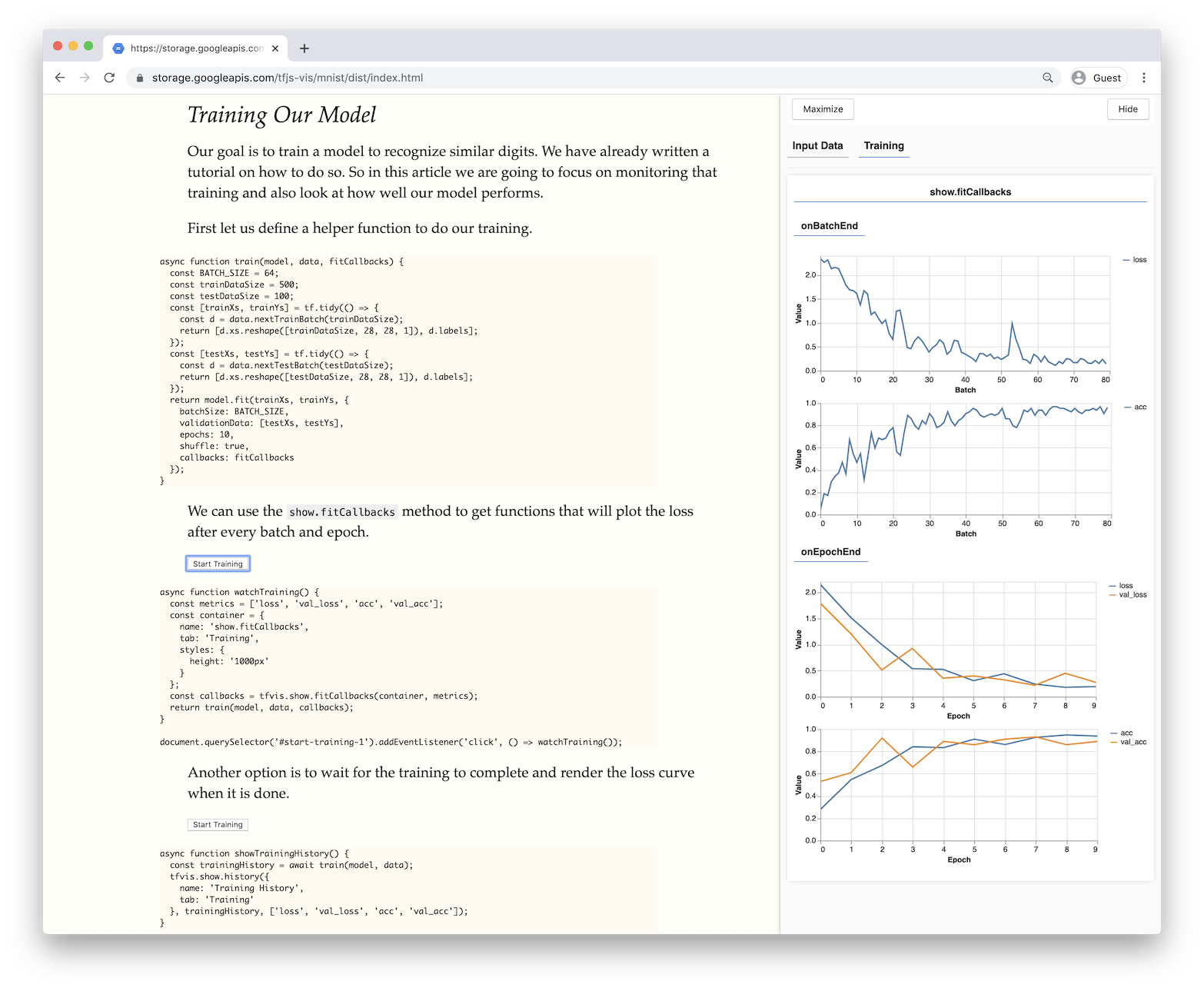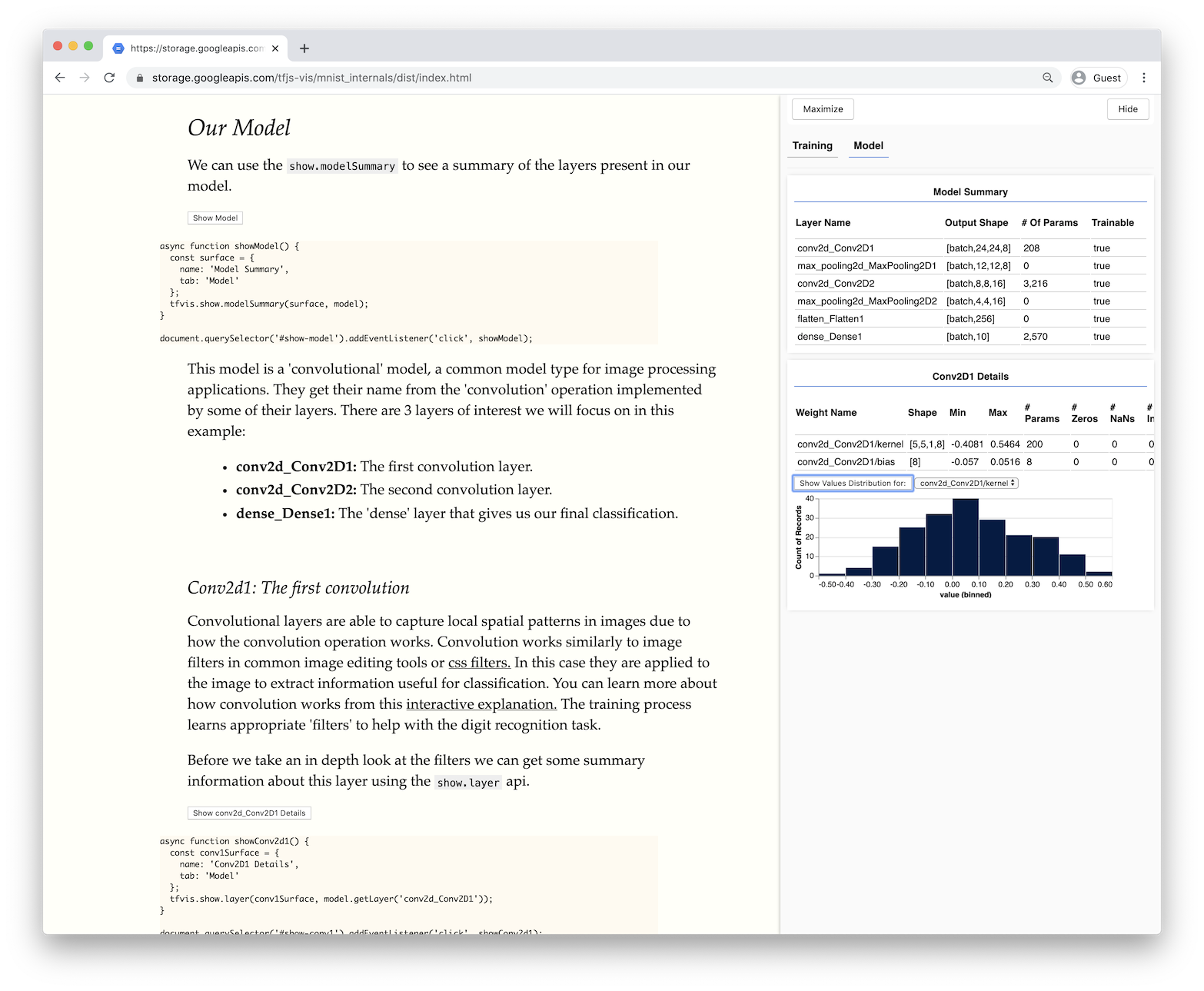Package Exports
- @tensorflow/tfjs-vis
This package does not declare an exports field, so the exports above have been automatically detected and optimized by JSPM instead. If any package subpath is missing, it is recommended to post an issue to the original package (@tensorflow/tfjs-vis) to support the "exports" field. If that is not possible, create a JSPM override to customize the exports field for this package.
Readme
tfjs-vis
tfjs-vis is a small library for in browser visualization intended for use with TensorFlow.js.
Its main features are:
- A set of visualizations useful for visualizing model behaviour
- A set of high level functions for visualizing objects specific to TensorFlow.js
- A way to organize visualizations (the visor) of model behaviour that won't interfere with your web application
The library also aims to be flexible and make it easy for you to incorporate custom visualizations using tools of your choosing, such as d3, Chart.js or plotly.js.
Example Screenshots
Training Metrics

Model Evauation

Model Internals

Activations and custom visualizations

Demos
Installation
You can install this using npm with
npm install @tensorflow/tfjs-visor using yarn with
yarn add @tensorflow/tfjs-visYou can also load it via script tag using the following tag, however you need to have TensorFlow.js also loaded on the page to work. Including both is shown below.
<script src="https://cdn.jsdelivr.net/npm/@tensorflow/tfjs"> </script>
<script src="https://cdn.jsdelivr.net/npm/@tensorflow/tfjs-vis"></script>API
See https://js.tensorflow.org/api_vis/latest/ for interactive API documentation.
Sample Usage
const data = [
{ index: 0, value: 50 },
{ index: 1, value: 100 },
{ index: 2, value: 150 },
];
// Get a surface
const surface = tfvis.visor().surface({ name: 'Barchart', tab: 'Charts' });
// Render a barchart on that surface
tfvis.render.barchart(surface, data, {});Issues
Found a bug or have a feature request? Please file an issue on the main TensorFlow.js repository
Building from source
To build the library, you need to have node.js installed. We use yarn
instead of npm but you can use either.
First install dependencies with
yarnor
npm installThen do a build with
yarn buildor
npm run buildThis should produce a tfjs-vis.umd.min.js file in the dist folder that you can
use.